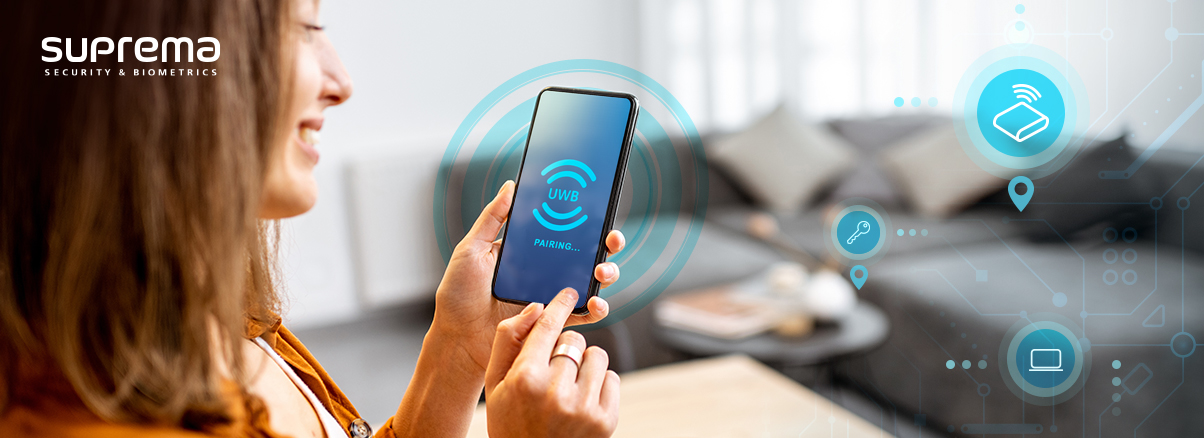- Blogs & Articles

As of 2023, smartphones from both Apple and Samsung now come equipped with ultra-wideband (UWB) technology. Apple devices use UWB for AirDrop proximity sharing with iPhones and for location tracking via digital tags to keep tabs on users’ important items like wallets and bags. The ‘SmartThings Find’ feature on Samsung’s Galaxy phone models uses UWB to find lost digital devices.
At first glance, it may seem that finding devices and objects is a very simple function. However, from a technical standpoint, it is actually very difficult to achieve high enough accuracy to instantly find devices and objects in a complex indoor space such as a home or office.
UWB is an RF technology that makes this accuracy possible. It is known that UWB can measure an object’s exact position within an error of only about 5 to 10 cm. To achieve such high accuracy, UWB makes use of wideband communication and Time-of-Flight (TOF)–based distance measurement technology.
While 2.4 GHz-based short-distance wireless communications such as Wi-Fi or Bluetooth Low Energy Protocol (BLE) generally have a communication band of several MHz, UWB has a communication band of several GHz. This much higher bandwidth allows for far fewer communication failure retries and a faster response speed.
Whereas conventional RF technology measures distance by signal strength using the RSSI (Received Signal Strength Indicator) method, UWB measures distance by TOF. In the TOF method, signals are sent similarly to how radar works, with distance measured as a time difference when the signal returns. Signal strength often decreases due to environmental influence, making it difficult to use this measurement as an absolute standard. However, signal speed is always constant, making TOF-based ranging more accurate than RSSI-based ranging, and a much better measurement for use as an absolute standard. Furthermore, if a signal’s angle is added, even more precise position measurement is possible.
Will UWB change access security?
GPS-based positioning is subject to a general error of about 50 meters. In an outdoor environment, a 50-meter error may not be significant. However, in the case of indoor positioning, it is important to have a much higher degree of precision.
Increased accuracy indoor positioning technology has been continuously studied for decades through various methods such as Wi-Fi, Bluetooth and geomagnetism. With UWB, it has finally reached a level of performance that can satisfy the market and users. UWB makes it possible to identify the user's exact location information within a building, and this information can be used as data to work with various services.
Now let's shift the perspective and consider how accurate location information will change access security:
Accurate distance measurement, when used together with face recognition or mobile access credentials, will enable walk-through entry and exit without any need for special authentication procedures — finally making possible a highly futuristic technology that everyone in the access security industry has been imagining for decades.
Accurate location measurement will lead to the emergence of an access security system that no longer requires the installation of authentication readers on every door. It will be possible to check and verify the credentials of every person trying to access each door without using individual door access readers at all.
UWB will enable accurate distance and location measurement. These two features will enable safe and convenient access for both companies and users, without any need to install separate access readers or go through a separate authentication process for each door one is trying to access.
UWB advances with smartphones
One important prerequisite must be met before UWB can enable this change: it is necessary for UWB to be supported in all smartphones on the market.
That being said, UWB is already supported in Apple iPhones and Samsung's Galaxy series, and mid-range smartphone brands such as Xiaomi have also announced plans to enhance their new products with UWB technology. Considering the rapid adoption rate in existing smartphones, there is a high probability that almost all smartphones will support UWB within just two to three years, making our prediction for the future of access security that much closer to becoming a reality.
Click here for Understanding UWB, Part 2: Walk-through access authentication will be realized soon.











